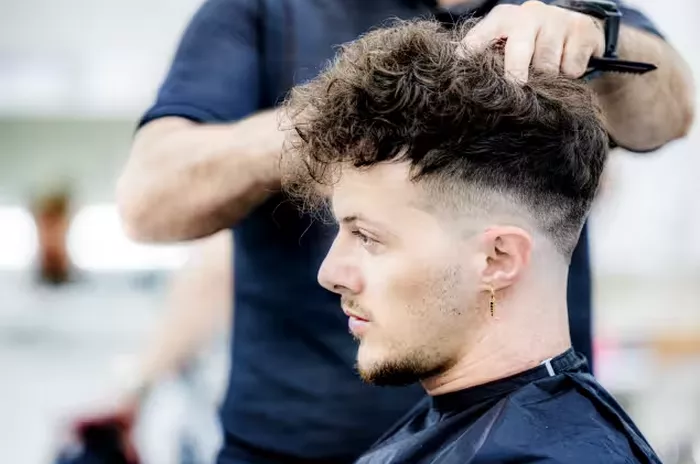Beauty schools are witnessing a rise in immigrant men enrolling in hairdressing programs, according to vocational colleges contacted by Yle. Many of these men venture into self-employment after graduating.
In Helsinki, two-thirds of hairdressing students are of foreign origin, while in Turku, they make up one-third. After completing their studies, these new stylists often work independently.
At Turku Vocational Institute, hairdressing student Vlorim Durmishi practices curling a mannequin’s hair. His instructor, Jonna Laaksonen, reminds the class to use heat protection spray before styling.
Though enrolled in a two-year barbering program, these students also learn to handle women’s hair. “This is definitely my thing,” Durmishi said. “I like barbering, but I actually like the salon side of things even more. Now all I’ve got left is finishing my studies and looking for a job.”
Durmishi, who arrived in Finland from Kosovo 20 years ago, has previously worked at Nokia factories and as a bus driver.
Another student, Hamdi Rama, also from Kosovo, arrived in Finland three years ago. He is demonstrating men’s haircutting techniques and has already secured a job at a salon in Raisio. “I will start as an employee at a hair salon. It’s more secure than immediately going into business,” Rama explained.
Laura Lindholm, who heads the hair and beauty department at the Turku institute, noted that one-third of their hairdressing students are immigrants or children of immigrants. She highlighted that men’s salon services are a growing global trend, making it logical for men to pursue this trade. “Some of our students already had barbering skills before they came here,” she said.
In Helsinki, Taneli Ylinen of the Helsinki Vocational College reported that about 60 percent of their hairdressing students are of foreign backgrounds. “Being a barber is highly respected, especially among Kurds,” Ylinen added.
Employment prospects also attract students to the profession. There are nearly 100 stylist job openings in the Uusimaa region, according to TE centre postings.
Ylinen emphasized the importance of mastering barbering skills first and then learning other techniques on the job. In larger cities, stylists often specialize, while in smaller towns, they need to serve a broader range of clients.
To graduate, Turku hairdressing students must learn more than just men’s hair and beard services. They also need to perform color treatments, perms, and women’s haircuts, including elegant updos.
The hair and beauty industry has traditionally been female-dominated, but this is changing, said Laaksonen. “It doesn’t need to be the case that only women do women’s hair. These men are skilled barbers, but they can also curl and create updos. They are interested in all the trends,” she stated.


